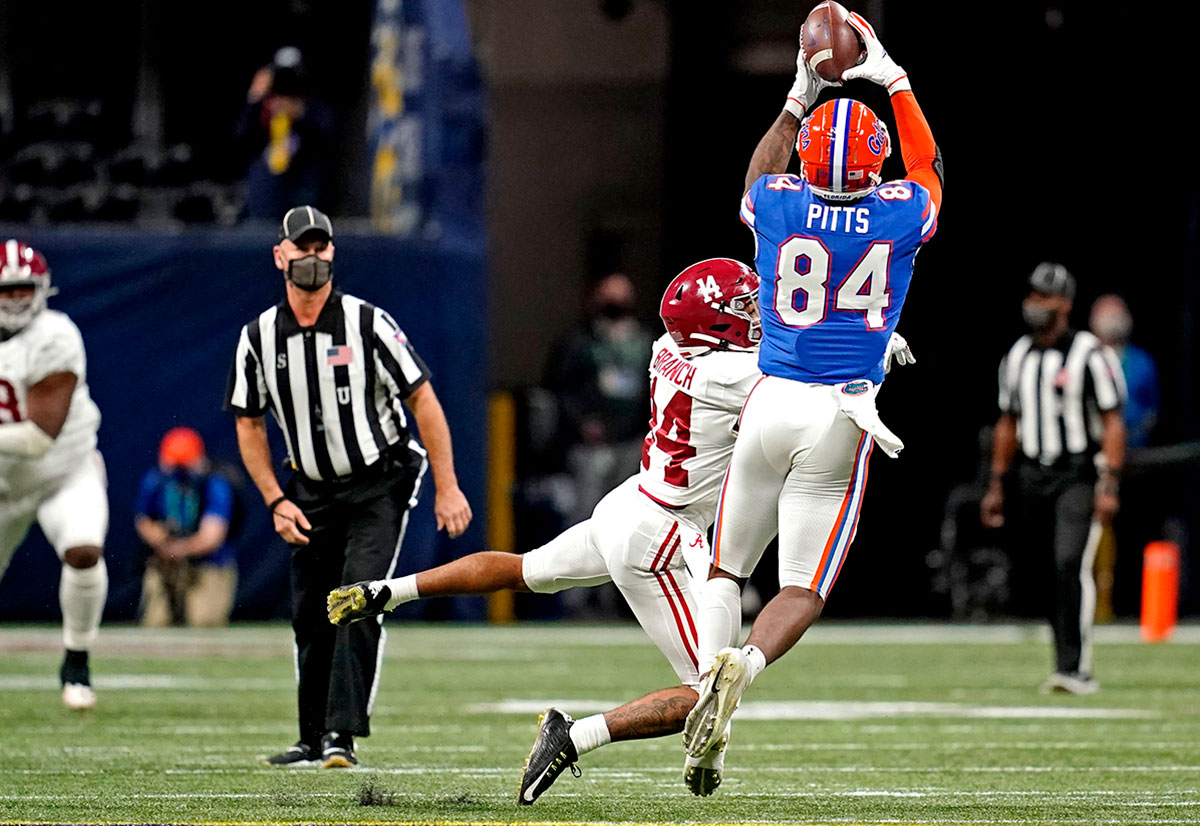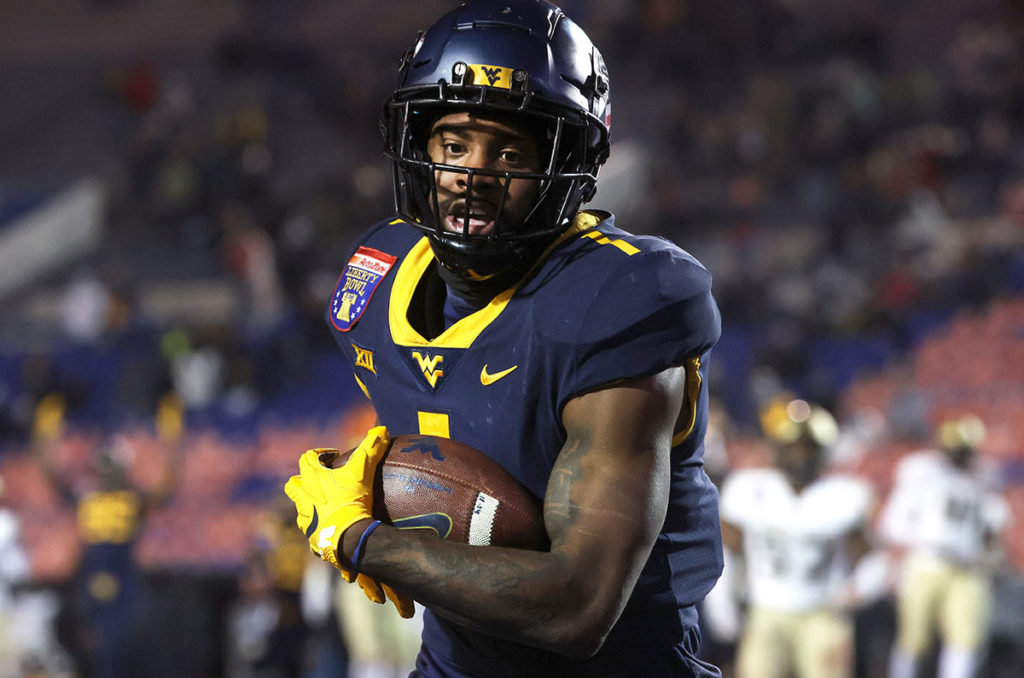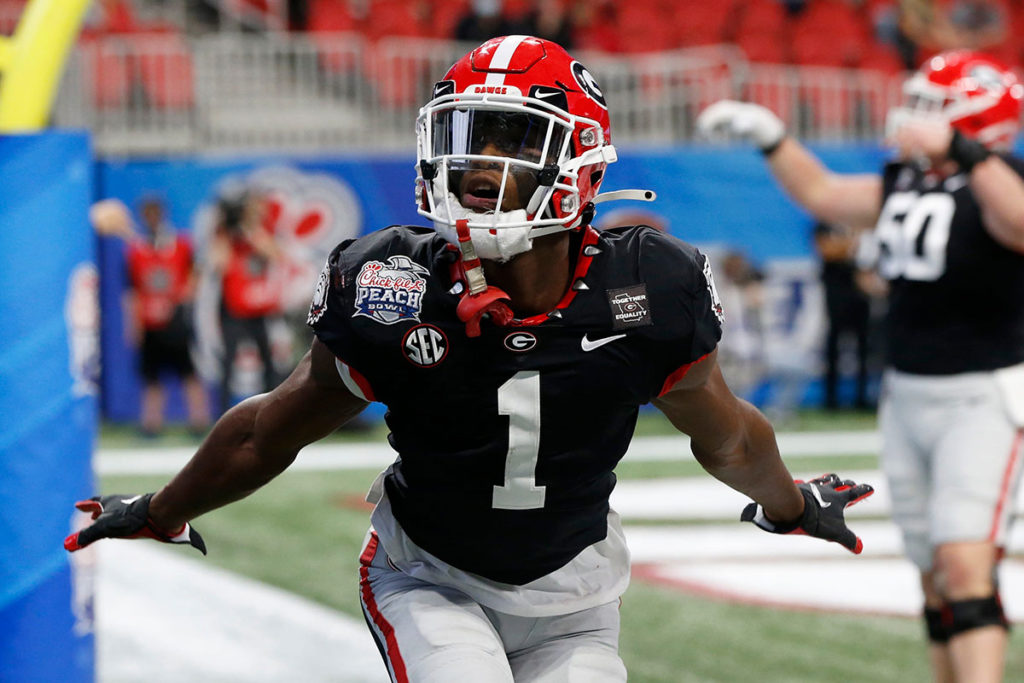When the Atlanta Falcons selected tight end Kyle Pitts with the fourth overall pick on Thursday Night, it immediately posed a major question to teams around the league. How do we defend this freak of nature? Perhaps no team will need to answer that question more demonstratively than the Bucs, set to face a loaded Falcons offense twice a year in the NFC South.
How do you stop a unicorn like Pitts when the Falcons already have so many other weapons at their disposal?
Pitts is a massive target at 6-foot-6, 245 pounds. Pitts is blazing fast at the position with a 4.44 40-yard dash. He can consistently beat man coverage against cornerbacks, he poses a size problem when matched up with most safeties and he’s simply too athletic to be covered by most linebackers. Per Pro Football Focus, last season Pitts received a 96.1 receiving grade while totaling 3.26 yards per route run and 4.91 yards per route run against man coverage – the third-best mark in the nation and nearly two yards more than the next-best tight end. Pitts would be a first-round talent as a receiver alone, but his ability to create mismatches at the tight end position could very realistically put him in that upper echelon alongside Travis Kelce, George Kittle and Darren Waller.
In a perfect world the Bucs would let Carlton Davis slide in and out and play over Pitts when he splits out wide. Davis is a physical corner and has the necessary length to battle Pitts, but as long as Julio Jones is wearing a Falcons jersey, Davis will have his hands full there. After Davis, Jamel Dean will continue to be tasked with covering Calvin Ridley on the outside. And in the slot, Tampa Bay will still need Sean Murphy-Bunting on Russell Gage as the Falcons ran over 60 percent of their offensive snaps with three or more receivers on the field in 2020, something that probably won’t change drastically moving forward. Murphy-Bunting likely doesn’t possess the size required to contain Pitts anyway.
This sheer level of offensive firepower will force defensive coordinator Todd Bowles to get creative. Neither Antoine Winfield Jr. nor Jordan Whitehead are optimally suited to take on Pitts in coverage all game, and despite Mike Edwards’ great play in coverage last year, a dime package would force the Bucs to take Lavonte David or Devin White off of the field far too often. Edwards could step in for Whitehead rotationally, but the Bucs love what their fourth-year strong safety brings in the box. Edwards on the other hand finished the season with a missed tackle rate of 25 percent.
Given his athletic profile Devin White would seem to be the most capable option left to match up with Pitts, but White’s play in man coverage was downright bad for most of last season. Despite a red hot stretch to end the season, extending through the Bucs’ Super Bowl victory over the Chiefs, White allowed a completion percentage of 87.8 and a passer rating of 112.6 in 2020.
Conversely, despite not having near the pure athleticism that White possesses, David once again proved himself one of the best off-ball linebackers in coverage last year. David posted a PFF coverage grade of 83.8 in 2020, culminating in a masterful Super Bowl performance where he held the All-Pro Kelce to just three receptions for 23 yards when lined up against him, while adding two pass breakups.
The Bucs best hope to slow down Pitts would be a significant step forward in coverage from White as he enters his third year. But more predictably, I would expect David to be the primary challenger when Pitts is deployed as an in-line tight end, with a cornerback in coverage as the Falcons move out of three-receiver sets. Pitts has the potential to be a next-level mismatch, and the Bucs’ heaviest doses of bracket coverages and nickel/dime personnel may be deployed against their divisional rivals at a sky-high rate next season.




